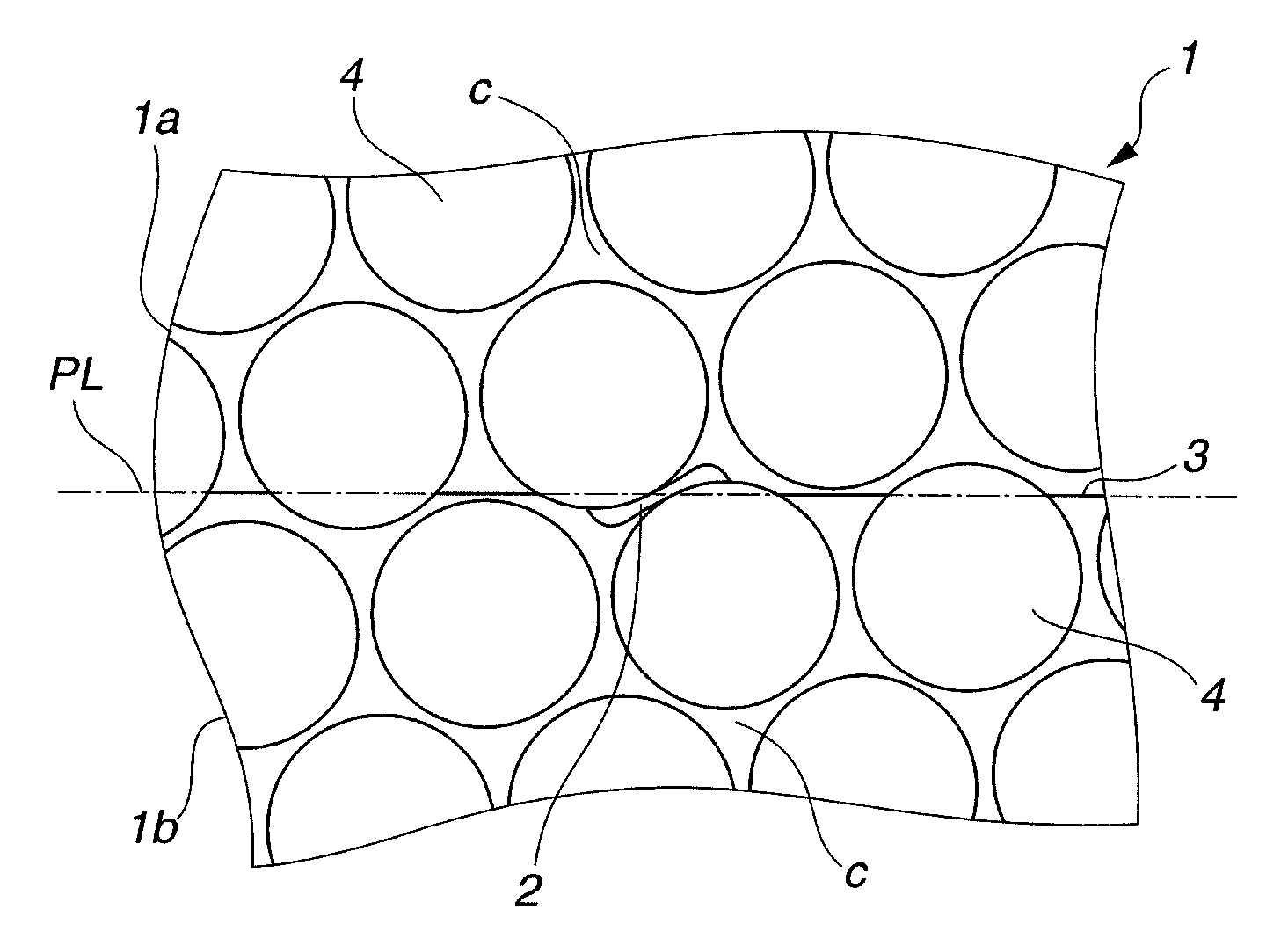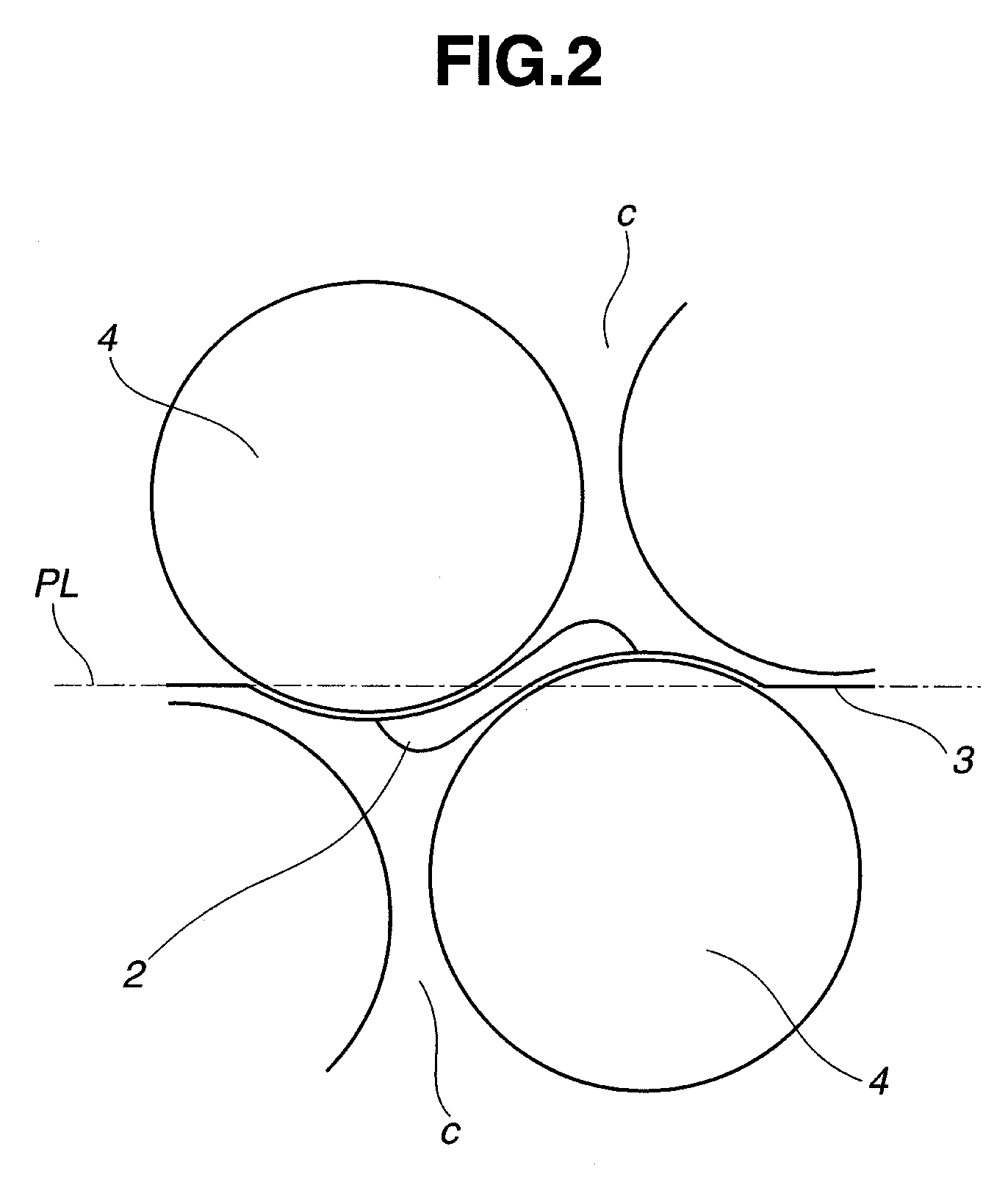Golf ball mold, golf ball and golf ball manufacturing method
a golf ball and mold technology, applied in the field of golf ball molds, can solve the problems of lack of uniformity in the aerodynamic symmetry of the ball, difficulty in achieving a uniform arrangement of dimples on the spherical surface of the ball, variability in flight performance, etc., to achieve the effect of reducing the diameter of the injection port, reducing the surface area available for providing injection ports, and closer coverage of the surfa
- Summary
- Abstract
- Description
- Claims
- Application Information
AI Technical Summary
Benefits of technology
Problems solved by technology
Method used
Image
Examples
examples
[0071]Using a cis-1,4-polybutadiene-based rubber material, cores having a diameter of 37.3 mm were fabricated for each example. Next, an inner cover layer composed primarily of an ionomeric resin was injection-molded to a thickness of 1.7 mm over the core in each example, thereby giving intermediate spheres in the respective examples. Then, in the respective examples, using the type of injection gate indicated in Table I, and using the respective molds of Examples I to III having six injection gates uniformly disposed along the parting line, a cover material composed primarily of urethane resin was injection-molded to a thickness of 1.0 mm, thereby forming an intermediate sphere in each example. As a result, a molded ball which had inner and outer cover resin layers formed on the core surface, the same arrangement of dimples, and a diameter of 42.70 mm and a weight of 45.30 g was fabricated in each example.
[0072]After injection molding, the cover resin material was water-cooled by m...
PUM
| Property | Measurement | Unit |
|---|---|---|
| distance | aaaaa | aaaaa |
| size | aaaaa | aaaaa |
| surface area | aaaaa | aaaaa |
Abstract
Description
Claims
Application Information
 Login to View More
Login to View More - R&D
- Intellectual Property
- Life Sciences
- Materials
- Tech Scout
- Unparalleled Data Quality
- Higher Quality Content
- 60% Fewer Hallucinations
Browse by: Latest US Patents, China's latest patents, Technical Efficacy Thesaurus, Application Domain, Technology Topic, Popular Technical Reports.
© 2025 PatSnap. All rights reserved.Legal|Privacy policy|Modern Slavery Act Transparency Statement|Sitemap|About US| Contact US: help@patsnap.com



